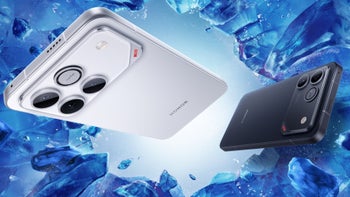Huawei P20 Pro and other models get delisted from benchmark app for inflating results (UPDATE)

Back in 2013, benchmarking firm 3DMark delisted the results from several devices. The Samsung Galaxy Note 3 (both Snapdragon and Exynos versions), Galaxy Note 10.1 (2014) tablet, HTC One (M7) and HTC One mini were removed from the 3DMark site for cheating. How did these devices game the system? Samsung and HTC allegedly included software on the aforementioned devices that had their processors run at maximum speeds when benchmark apps were run.
UPDATE: Huawei has issued a rather lengthy statement today.
"Huawei and UL (creators of 3DMark) have held comprehensive discussions on benchmarking practices this week, and have reached a positive agreement on the next steps in working together.
In the discussion, Huawei explained that its smartphones use an artificial intelligent resource scheduling mechanism. Because different scenarios have different resource needs, the latest Huawei handsets leverage innovative technologies such as artificial intelligence to optimize resource allocation in a way so that the hardware can demonstrate its capabilities to the fullest extent, while fulfilling user demands across all scenarios.
UL understands the intent of Huawei’s approach, but is opposed to forcing the use of a “Performance Mode” by default when a benchmarking application is detected by the device. UL rules require a device to run the benchmark as if it were any other application.
Huawei respects consumers’ right to choose what to do with their devices. Therefore, Huawei will provide users with open access to “Performance Mode” in EMUI 9.0, so that the user can choose when to use the maximum power of their device.
Huawei and UL have also discussed current common benchmark testing methodologies in general. UL and Huawei would like to participate in an industry movement to develop benchmarking standards that best serve the needs of manufacturers, press, and consumers.
To prevent confusion around current benchmarking results, after discussion, UL and Huawei have temporarily delisted the benchmark scores of a range of Huawei devices, and will reinstate them after Huawei grants all users of Huawei handsets access to the Performance Mode."-Huawei
In the discussion, Huawei explained that its smartphones use an artificial intelligent resource scheduling mechanism. Because different scenarios have different resource needs, the latest Huawei handsets leverage innovative technologies such as artificial intelligence to optimize resource allocation in a way so that the hardware can demonstrate its capabilities to the fullest extent, while fulfilling user demands across all scenarios.
UL understands the intent of Huawei’s approach, but is opposed to forcing the use of a “Performance Mode” by default when a benchmarking application is detected by the device. UL rules require a device to run the benchmark as if it were any other application.
Huawei respects consumers’ right to choose what to do with their devices. Therefore, Huawei will provide users with open access to “Performance Mode” in EMUI 9.0, so that the user can choose when to use the maximum power of their device.
Huawei and UL have also discussed current common benchmark testing methodologies in general. UL and Huawei would like to participate in an industry movement to develop benchmarking standards that best serve the needs of manufacturers, press, and consumers.
To prevent confusion around current benchmarking results, after discussion, UL and Huawei have temporarily delisted the benchmark scores of a range of Huawei devices, and will reinstate them after Huawei grants all users of Huawei handsets access to the Performance Mode."-Huawei
Today, 3DMark has delisted several Huawei handsets (including one Honor model) after it reached the same conclusions as a published report. The latter called out Huawei for inflating the benchmark results on models like the Huawei P20 Pro, Huawei Nova 3 and the Honor Play. This has the effect of making these models appear to run faster than competing phones. Benchmark apps are designed to quantify the performance of certain aspects of a handset for comparison purposes. The 3DMark app in the Google Play Store measures an Android phone's CPU and GPU performance using different tests that are each designed specifically for low-end to high-end handsets.
Like it did with Samsung and HTC five years ago, 3DMark accused Huawei of including software on the P20 Pro, Nova 3 and Honor Play that recognized when a benchmark testing app was running, and pushed the processors on the phones to run all out. Usually, only phone enthusiasts even bother looking at benchmark scores. An even smaller number will consider the results when purchasing a new phone. Still, some manufacturers (usually not mainstream firms) do mention these scores when promoting a new handset.
source: AndroidAuthority
Follow us on Google News













Things that are NOT allowed:
To help keep our community safe and free from spam, we apply temporary limits to newly created accounts: